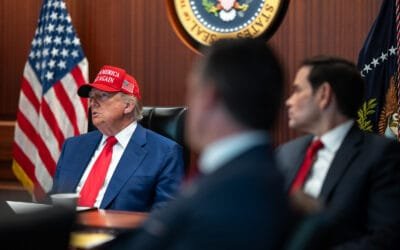Ever since Alan Greenspan surprised the markets by lowering interest rates 50 basis points a week ago Wednesday, the financial media have been frantic with worry about deflation. Well, you heard it here first — exactly a year and a day ago in this column, on November 14, 2001. I told you then about the work of several economists — most visibly David Gitlitz, my partner at Trend Macrolytics — who’ve shown that deflation has been at work in the U.S. economy since early 1997.
Deflation is the opposite of inflation. With inflation, there’s too much money being printed by the Fed, figuratively speaking, and it becomes progressively less valuable relative to the prices of goods, services and assets. With deflation, there’s too little money being printed, and the prices of goods, services and assets stagnate or decline. It’s been happening in Japan for a decade, and as it has accelerated it has led to a prolonged recession.
The Bank of Japan — their equivalent of the Fed — has had interest rates at zero for most of the last five years, and it hasn’t helped. They’re out of bullets, and now that our Fed has lowered its discount rate to only 0.75%, we’re almost out of bullets, too. Greenspan knows it. In the minutes of the Federal Open Markets Committee’s September meeting, made public a week ago Thursday, there was a frank discussion of how the Fed’s “conventional means” — setting overnight interest rates — were on the verge of becoming useless. What’s the Fed supposed to do, set negative interest rates? Pay you for borrowing money?
No, what the Fed would have to do is abandon its mechanism of setting interest rates altogether — it would simply have to crank up its printing press, and wade into the markets and buy government bonds from the accounts of member banks to put that freshly printed money into the banking system. It’s happened before — the Fed abandoned its interest-rate-setting mechanism for several weeks after the terrorist attacks of September 11, when the global banking system’s thirst for dollar liquidity was so intense that nothing mattered except slaking it.
Greenspan admitted Wednesday (November 13th), in the question-and-answer period following his testimony before the Congressional Joint Economic Committee, that this is exactly what the Fed would have to do again if it saw deflation continuing unchecked. This kind of fundamental change in the Fed’s basic operating procedure would be radical surgery, and it would profoundly unsettle the markets while it was going on.
But it would be necessary, and it would probably work — and what the Fed learns from it could lead to lasting improvement in the Fed’s monetary policy effectiveness. My fondest hope is that the Fed’s interest-rate-setting mechanism would be permanently replaced with a modern version of a gold standard — a policy that would guide the Fed’s creation of money to target the stable price of gold or a basket of basic commodities.
How should investors position themselves for a world of continuing deflation, if that’s what we’re in for? As I pointed out in a previous column, deflation is great for bonds and terrible for stocks. That’s because deflation makes all assets (like stocks) less valuable, and all liabilities (like bonds) more valuable. If you’d simply sold stocks and bought bonds then, you’d be way ahead of the curve — say









